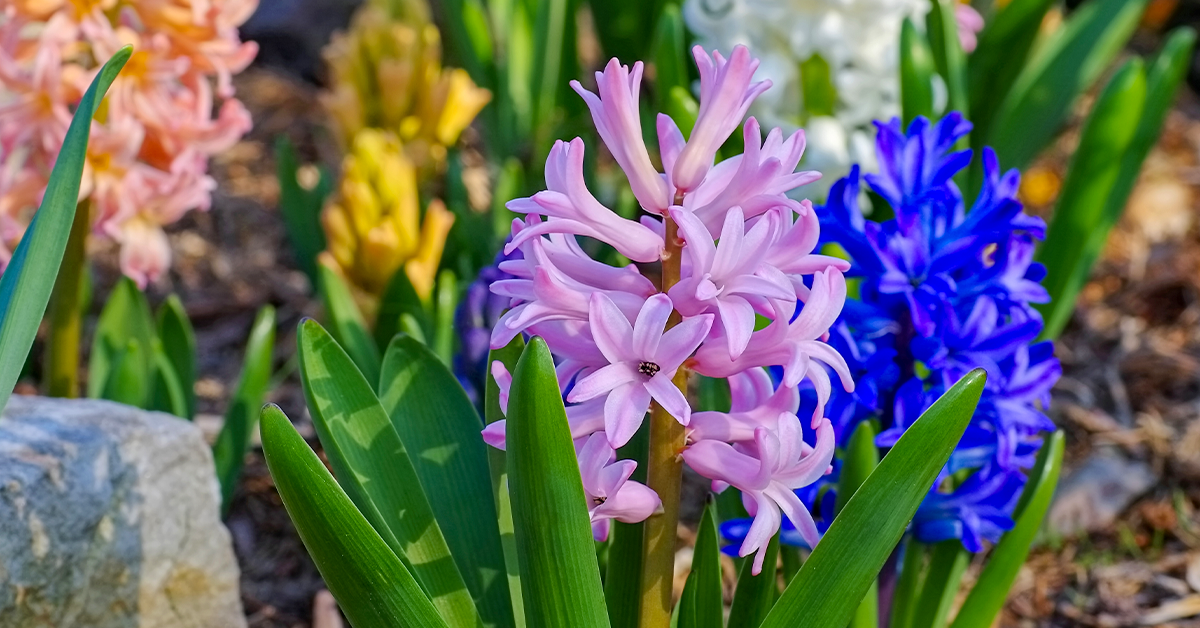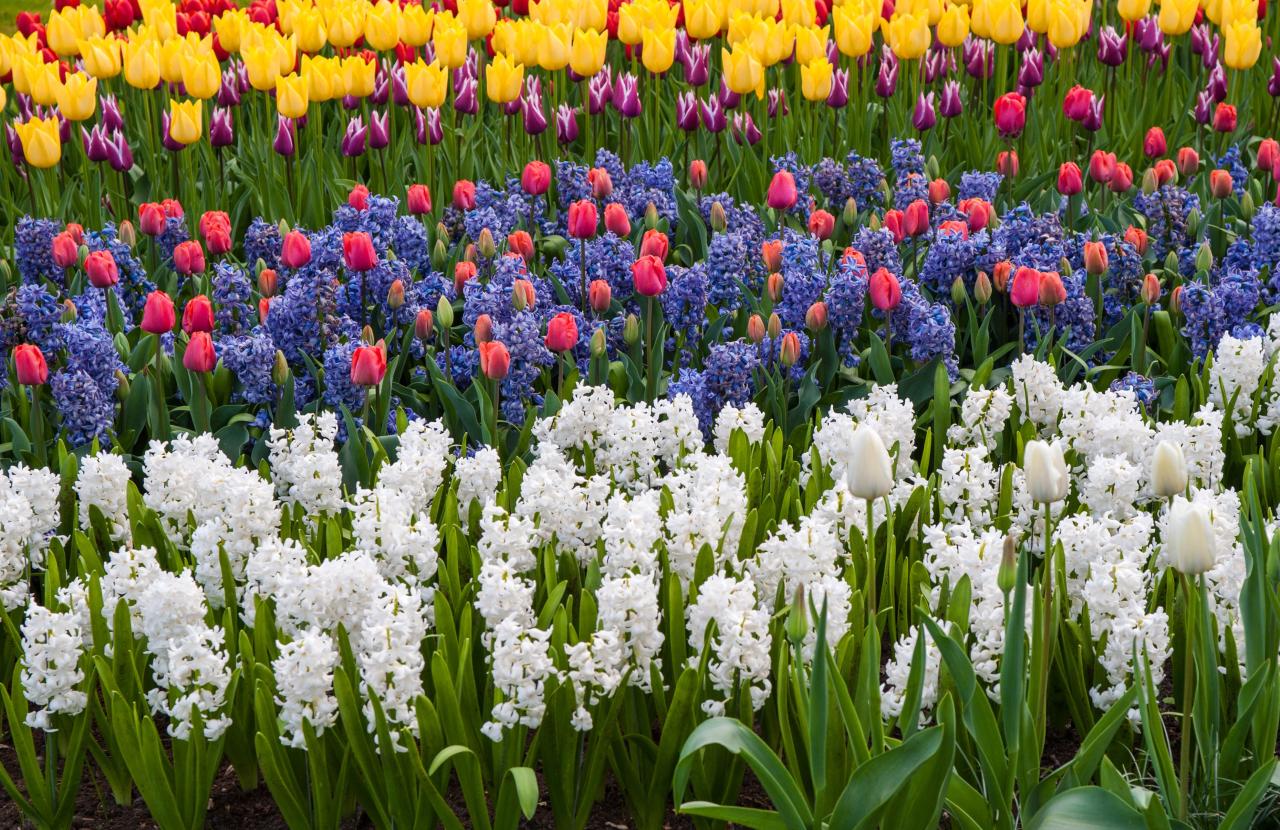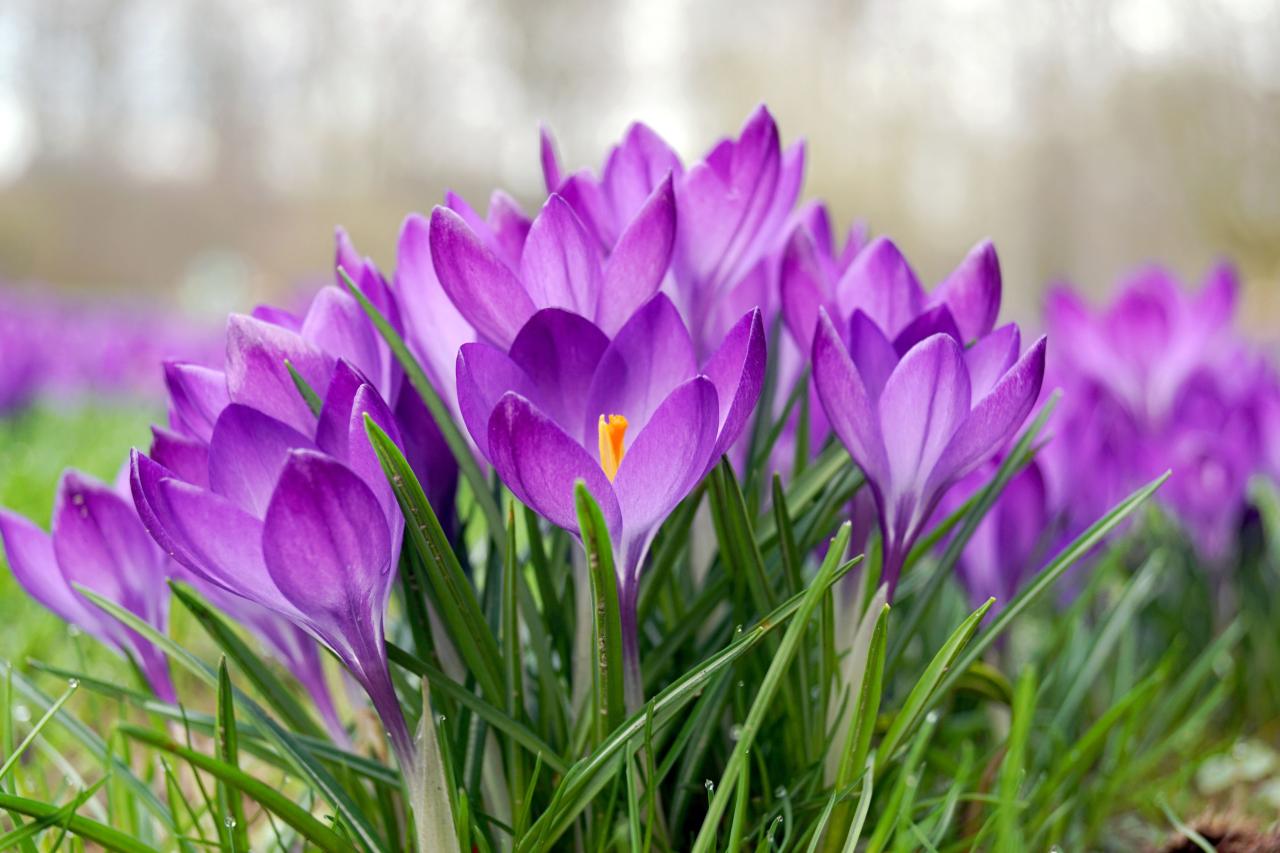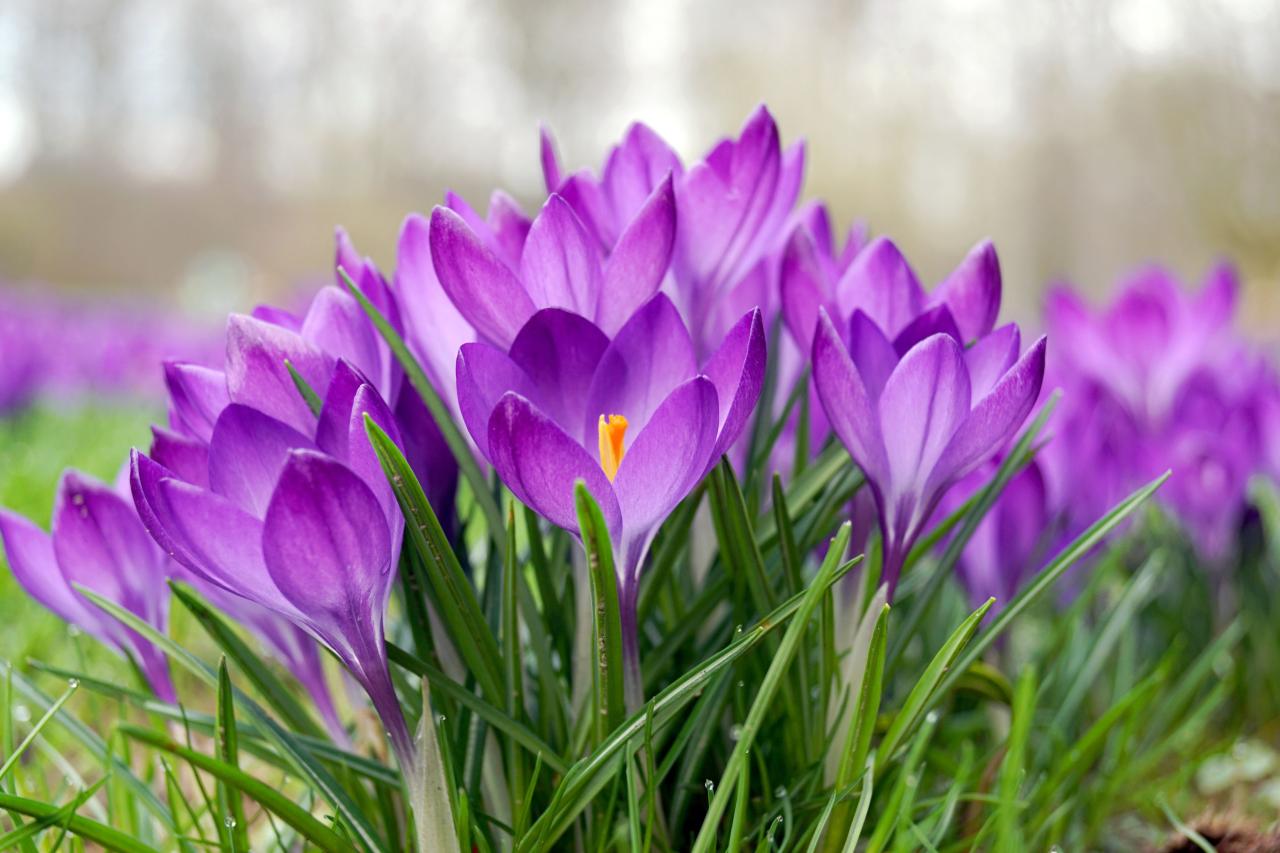Best Late-Spring Flowering Bulbs To Plant In Fall: Transform your garden into a vibrant tapestry of color with these stunning late-spring bloomers. Planting bulbs in the fall ensures a spectacular display of flowers come spring, adding a touch of magic to your outdoor space.
Late-spring bulbs offer a unique advantage – they thrive in cooler climates, blooming just as the weather warms up, providing a breathtaking transition from the dormant winter months to the vibrant summer season.
From the classic elegance of tulips to the vibrant hues of lilies, these bulbs are not only beautiful but also remarkably easy to care for. With a little planning and the right planting techniques, you can enjoy a captivating spectacle of blooms throughout the late spring months, attracting pollinators and adding a touch of joy to your garden.
Popular Late-Spring Flowering Bulbs

Late-spring flowering bulbs bring vibrant colors and delightful fragrances to gardens after the first flush of spring blooms fades. These bulbs, planted in the fall, emerge from the soil in late spring, providing a stunning display of color and texture just as the weather warms up.
Their extended bloom time and diverse colors make them ideal for adding beauty and interest to any garden.
Popular Late-Spring Flowering Bulbs
Choosing the right bulbs for your garden depends on your climate, soil type, and desired aesthetic. Here’s a list of popular late-spring flowering bulbs, their bloom times, colors, and growing conditions:
Bulb Name |
Bloom Time |
Flower Color |
Growing Conditions |
|---|---|---|---|
Allium (Ornamental Onion) |
Late Spring to Early Summer |
Purple, Pink, White, Yellow |
Full sun to partial shade, well-drained soil |
Crocus |
Late Spring |
Purple, White, Yellow, Orange |
Full sun to partial shade, well-drained soil |
Fritillaria (Fritillary) |
Late Spring |
Purple, Yellow, Orange, Red |
Full sun to partial shade, well-drained soil |
Iris |
Late Spring to Early Summer |
Purple, Blue, White, Yellow, Orange |
Full sun to partial shade, well-drained soil |
Lily |
Late Spring to Early Summer |
White, Pink, Yellow, Orange, Red |
Full sun to partial shade, well-drained soil |
Peony |
Late Spring to Early Summer |
Pink, White, Red, Yellow |
Full sun to partial shade, well-drained soil |
Tulip |
Late Spring |
Red, Yellow, Pink, Orange, Purple, White |
Full sun to partial shade, well-drained soil |
Hyacinth |
Late Spring |
Blue, Purple, Pink, White, Yellow, Red |
Full sun to partial shade, well-drained soil |
Gladiolus |
Late Spring to Early Summer |
Red, Yellow, Pink, Orange, Purple, White |
Full sun, well-drained soil |
Daffodil |
Late Spring |
Yellow, White, Orange, Pink |
Full sun to partial shade, well-drained soil |
These bulbs are known for their beauty and longevity. They add vibrant color and texture to gardens, attracting pollinators and providing visual interest throughout the late spring and early summer months. Remember to choose bulbs that are suitable for your specific climate and soil conditions for optimal growth and flowering.
Bulb Care and Maintenance: Best Late-Spring Flowering Bulbs To Plant In Fall

Late-spring flowering bulbs, like many other plants, require specific care and maintenance to thrive and produce beautiful blooms year after year. This section will discuss important aspects of bulb care, including watering, fertilization, pest and disease control, and storage.
Watering Late-Spring Flowering Bulbs
Watering is crucial for bulb development and growth. These bulbs require consistent moisture, especially during the spring when they are actively growing and flowering. It is essential to maintain a balanced watering schedule, ensuring the soil is evenly moist but not waterlogged.
- Watering Frequency:Water the bulbs deeply but infrequently, allowing the top inch of soil to dry out between waterings.
- Watering Depth:Ensure the water reaches the roots by watering deeply rather than frequently.
- Avoid Overwatering:Excessive watering can lead to root rot, a common problem for bulbs.
Fertilizing Late-Spring Flowering Bulbs
Fertilizing provides essential nutrients for bulb growth and flowering. However, it is important to choose the right fertilizer and apply it appropriately.
- Fertilizer Type:Use a balanced fertilizer with a ratio of NPK (Nitrogen, Phosphorus, Potassium) like 10-10-10.
- Application Time:Apply fertilizer in early spring, just before the bulbs begin to emerge from the ground.
- Application Method:Sprinkle the fertilizer around the base of the bulbs, avoiding direct contact with the bulbs.
Protecting Bulbs from Pests and Diseases
Late-spring flowering bulbs can be susceptible to various pests and diseases that can damage their growth and flowering.
- Pests:Common pests include aphids, snails, slugs, and voles.
- Diseases:Common diseases include fungal diseases like botrytis blight and viral diseases like tulip breaking virus.
- Prevention:Maintain good garden hygiene, remove diseased plants, and use pest-resistant varieties to minimize the risk of pest and disease problems.
Storing Bulbs After Flowering
Once the late-spring flowering bulbs have finished blooming, they can be stored for the following season. This process helps ensure that the bulbs remain healthy and viable.
- Digging Up Bulbs:After the foliage has died back completely, dig up the bulbs carefully.
- Cleaning and Drying:Gently clean the bulbs with a brush to remove any soil and debris. Then, allow them to dry thoroughly in a well-ventilated area.
- Storage:Store the dried bulbs in a cool, dry, and dark place, such as a basement or garage.
Late-Spring Flowering Bulb Combinations

Creating a captivating display of late-spring blooms involves strategic combinations of various bulb varieties. By selecting bulbs with complementary colors, bloom times, and growth habits, you can achieve a vibrant and extended display that will transform your garden.
Late-Spring Flowering Bulb Combinations
Combining different bulb varieties can create a more vibrant and extended bloom period. This strategy allows for a visually appealing and diverse garden display. Here are some examples of late-spring flowering bulb combinations:
Bulb Combination |
Bloom Time |
Color Scheme |
Garden Setting |
|---|---|---|---|
Allium ‘Purple Sensation’ + Tulipa ‘Queen of Night’ + Hyacinthus ‘Blue Jacket’ |
Mid-May to Early June |
Purple and Blue |
Formal Garden |
Fritillaria imperialis ‘Aurora’ + Narcissus ‘Ice Follies’ + Muscari ‘Blue Magic’ |
Late April to Mid-May |
Yellow and Blue |
Cottage Garden |
Tulipa ‘Apricot Beauty’ + Narcissus ‘Geranium’ + Allium ‘Globemaster’ |
Late April to Early May |
Orange and White |
Woodland Garden |
Hyacinthus ‘Pink Pearl’ + Tulipa ‘Angelique’ + Muscari ‘Pink Sunrise’ |
Mid-May to Late May |
Pink and White |
Formal Garden |
Narcissus ‘Ice King’ + Tulipa ‘White Parrot’ + Allium ‘Purple Sensation’ |
Late April to Early June |
White and Purple |
Cottage Garden |
Inspiring Late-Spring Garden Designs
Late-spring gardens bursting with color and fragrance are a joy to behold. Late-spring flowering bulbs, with their diverse bloom times and vibrant hues, are essential for creating captivating late-spring garden designs. These bulbs, when combined with other plants, offer a tapestry of textures, shapes, and colors that transform any garden into a visual masterpiece.
Late-Spring Garden Design Examples, Best Late-Spring Flowering Bulbs To Plant In Fall
Late-spring gardens can be designed to create a variety of moods and atmospheres, depending on the chosen plants and their arrangement. Here are a few examples:
- A Romantic Cottage Garden: Imagine a charming cottage garden overflowing with late-spring blooms. A mix of pastel-colored tulips, such as ‘Angelique’ (pale pink) and ‘Queen of Night’ (deep purple), could be planted alongside fragrant alliums, like ‘Purple Sensation’, and delicate, white lacecap hydrangeas.
The contrasting textures and soft colors evoke a sense of tranquility and romance.
- A Bold and Modern Garden: For a more contemporary feel, consider a bold design featuring strong color contrasts and geometric shapes. Plant vibrant red and orange tulips, such as ‘Queen of the Night’ and ‘Black Parrot’, in a geometric pattern, interspersed with large, silver-leaved artemisia plants for a dramatic effect.
- A Naturalistic Meadow Garden: To create a wild and natural look, consider planting a mix of late-spring flowering bulbs in a naturalistic setting. For example, a combination of vibrant orange ‘Queen of the Night’ tulips, creamy white ‘White City’ alliums, and blue ‘Blue Giant’ Siberian irises, all planted in drifts, will create a vibrant and dynamic meadow-like scene.
Layout and Planting Scheme
The layout and planting scheme of a late-spring garden are crucial for creating visual harmony and showcasing the beauty of the bulbs.
- Planting in Drifts: Planting bulbs in drifts, rather than in straight lines, creates a more natural and visually appealing effect. For example, planting a group of 10-15 ‘Queen of the Night’ tulips together will create a dramatic splash of color, while a drift of 5-10 ‘White City’ alliums will provide a delicate and airy contrast.
- Varying Heights: Incorporating bulbs with varying heights, such as tall alliums and shorter tulips, adds visual interest and depth to the garden. This also helps to create a sense of movement and flow.
- Combining Bloom Times: Combining late-spring flowering bulbs with other plants that bloom at different times will ensure that the garden remains colorful and interesting throughout the season. For example, planting tulips with early-summer blooming peonies or late-spring flowering irises will create a succession of blooms.
Rationale Behind Design Choices
The choices of color, texture, and bloom time are all essential elements in creating a successful late-spring garden design.
- Color: Color plays a crucial role in setting the mood and atmosphere of a garden. For a romantic and tranquil garden, pastel shades like pink, lavender, and white are ideal. Bold and modern gardens can incorporate vibrant hues like red, orange, and yellow.
- Texture: Texture adds visual interest and depth to a garden. Combining plants with different leaf textures, such as the smooth, glossy leaves of tulips and the feathery foliage of alliums, creates a dynamic and engaging display.
- Bloom Time: Combining bulbs with different bloom times ensures a continuous display of color and fragrance throughout the late-spring season. For example, planting tulips that bloom in early May with alliums that bloom in late May will create a seamless transition of color.
Closing Notes
By incorporating these late-spring flowering bulbs into your garden, you’ll create a breathtaking landscape that bursts with color and life. Whether you prefer a classic cottage garden aesthetic or a modern, minimalist design, these bulbs offer endless possibilities for creating a visually stunning and fragrant outdoor haven.
So, grab your gardening gloves and prepare to be captivated by the beauty of late-spring bloomers – your garden will thank you for it.
FAQ Resource
What is the best time to plant late-spring flowering bulbs?
The optimal planting time for late-spring flowering bulbs varies depending on your region’s climate. In general, aim to plant them in the fall, about 6-8 weeks before the ground freezes.
How deep should I plant late-spring flowering bulbs?
The planting depth for late-spring flowering bulbs is typically 2-3 times the height of the bulb. For example, a bulb that is 2 inches tall should be planted 4-6 inches deep.
What kind of soil is best for late-spring flowering bulbs?
Late-spring flowering bulbs prefer well-drained soil that is rich in organic matter. You can improve your soil by adding compost or aged manure before planting.
Do I need to fertilize late-spring flowering bulbs?
While not always necessary, fertilizing late-spring flowering bulbs can encourage larger and more vibrant blooms. Use a balanced fertilizer specifically designed for bulbs.
